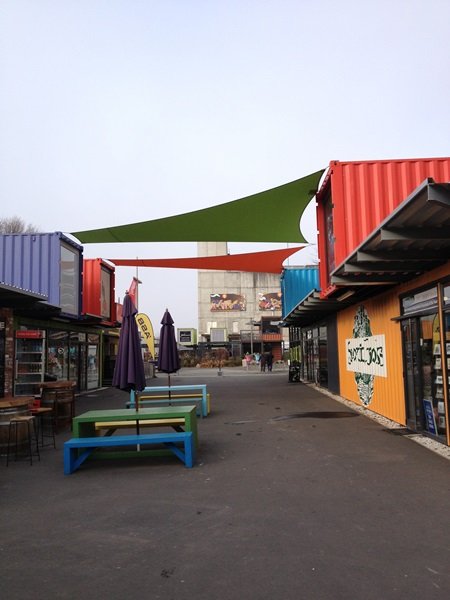Not just a tourist
We are delighted to have added an honours-level thesis paper and accompanying photos to the CEISMIC archive, from National University of Singapore student Shermine Kwok. As an undergraduate student of Geography, Shermine attended the University of Canterbury on an exchange in 2012. Inspired by the resilience of Christchurch and its residents, she returned here to study the creative urban regeneration efforts since the earthquakes of 2010 - 2011. This is her story.
I first visited Christchurch during the Christmas season of 2009, and thoroughly enjoyed taking in the sights like a good tourist should. However, due to the festive season, there were few people out on the streets, virtually no shops open, and my family spent a very eventful Christmas Day napping in the Rydges Hotel. Nevertheless, there was something irresistibly charming about the quaint city, its beautiful architecture and garden setting.
3 years later, (perhaps longing for more days spent napping) I decided to embark on a half year exchange programme in the University of Canterbury in 2012. Alas, sleep was to evade me on my first night. As I was recovering from jetlag, I felt my very first earthquake tremor. It may be part and parcel of kiwi life, but I had never experienced anything like that before! That certainly piqued my interest in Christchurch as an earthquake zone. What got me thinking harder about the topic was that Christchurch had been extraordinarily successful at rebranding itself as a pop-up city, emerging as one of the top 10 places to visit in the Lonely Planet’s guide and even landing 2nd spot on the New York Time’s list of places to visit in 2014. Being an avid traveller myself, this made me sit up and wonder what Christchurch was doing differently from other post-disaster cities that made it able to turn disaster into opportunity.
Throughout my semester in Christchurch, I had more opportunities to experience living in this funky pop-up city. I did my shopping in a container mall at Re:Start, went partying in a converted garage and had plenty of memorable meals and drinks in pop up establishments in the city. If nothing else, it was an awesomely novel experience. What a marked difference from the city I had visited in 2009. Christchurch had gone straight from old-school charm to cutting edge eclecticism.

Retail stores in shipping containers at Re:Start mall
When I got back to Singapore, I was privileged to be given the opportunity to take up this research topic on post disaster transitional landscapes, and before long I was on the plane headed back to Christchurch. The warmth and hospitality shown to me by those I met was overwhelming. Certainly, it is in each individual I met that I recognised the indomitable human spirit that has proven a strong catalyst for change and creativity in this beautiful city.
Coming from Singapore that features a very top-down approach to urban planning and redevelopment, I cannot emphasise how refreshing it was to see the local community very concerned and involved in shaping the future of their home city. Many individuals I spoke with whilst doing my research are certainly passionate movers and shakers who have a vision for Christchurch and are not afraid to put in hard work and wholehearted commitment to move Christchurch towards that vision bit by bit. The city has become a much more vibrant and exciting place because of the efforts of all who have played a part in moulding the transitional landscape of Christchurch. It was also rather interesting to me that the local council expended much energy into collating the views of the residents before planning their urban design, but I think it is fantastic in giving the people a sense of ownership of their city.

Terry Chung's project 'Smile for Christchurch' at Re:Start Mall
I hope to be able to revisit the city in future, to see how it continues to be shaped and redeveloped. Christchurch may never be the same, but it will certainly be beautiful, built on a foundation of hope, resilience and a stronger sense of community than ever before.

